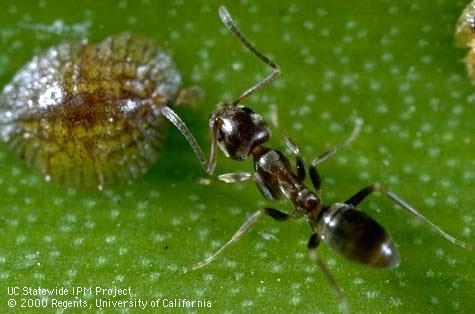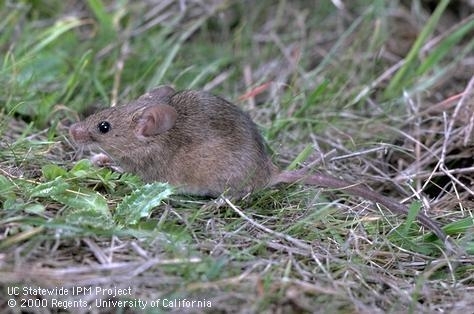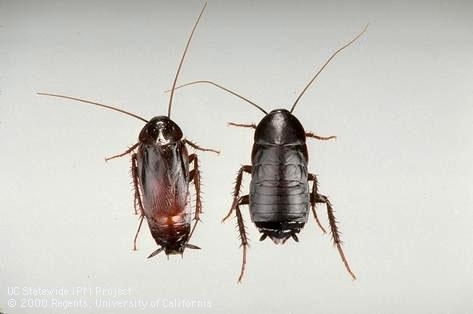
The drought may be driving more invasions by annoying insects such as ants, but not necessarily for the reasons one might expect.
Many people are asking, “Why are there so many more pests this year than usual?”
People may just be seeing more pests, according to an urban integrated pest management (IPM) advisor with UC Division of Agriculture and Natural Resources.
“The overall abundance of pests probably hasn't changed and may even have decreased as compared to wet years,” said Andrew Sutherland, Ph.D., urban IPM advisor for the San Francisco Bay Area. “The real questions we should be asking are ‘Why are these pests appearing earlier in the year?' and ‘Why are the pests appearing all at once as opposed to throughout the year?'”

“This is also the first year we've seen dramatic changes made by residents due to mandated water-use restrictions,” Sutherland said. “Areas with frequent irrigation and lush landscapes aren't available this year so nuisance pests like outdoor cockroaches, ants and crickets are migrating from dry areas to seek moisture.”
This search may lead the thirsty pests to homes, garages or landscape that they haven't visited before. The IPM advisor used oriental cockroaches as an example.
“Oriental cockroaches are highly dependent on moisture and humidity and are not normally found indoors,” said Sutherland. “Outdoors, if you have an irrigation control box, leaky hosebib or water meter box, or a French drain system, that's where you'll find them. But if this water supply has been reduced or shut off, this population you didn't even know of – that may have existed for years – may crawl under doors or into foundation cracks and move indoors in search of water.”

To learn more about home, garden, turf and landscape pests and how to exclude them, visit the UC Integrated Pest Management website at http://www.ipm.ucanr.edu/PMG/menu.house.html. For more advice on pest problems, contact the UC Master Gardeners at a local UC Cooperative Extension office http://ucanr.edu/County_Offices.
Further reading
Cockroaches http://www.ipm.ucanr.edu/PMG/PESTNOTES/pn7467.html?src=blog18995
Ants http://www.ipm.ucanr.edu/PMG/invertebrates/links.ants.html?src=blog18995
Rodents http://www.ipm.ucanr.edu/PMG/menu.house.html#VERT?src=blog18995
UC Master Gardeners http://mg.ucanr.edu/Become_a_Master_Gardener/Counties/?src=blog18995
Excluding seasonal nuisance pests http://www.ipm.ucanr.edu/PDF/PUBS/greenbulletin.2012.feb.pdf?src=blog18995